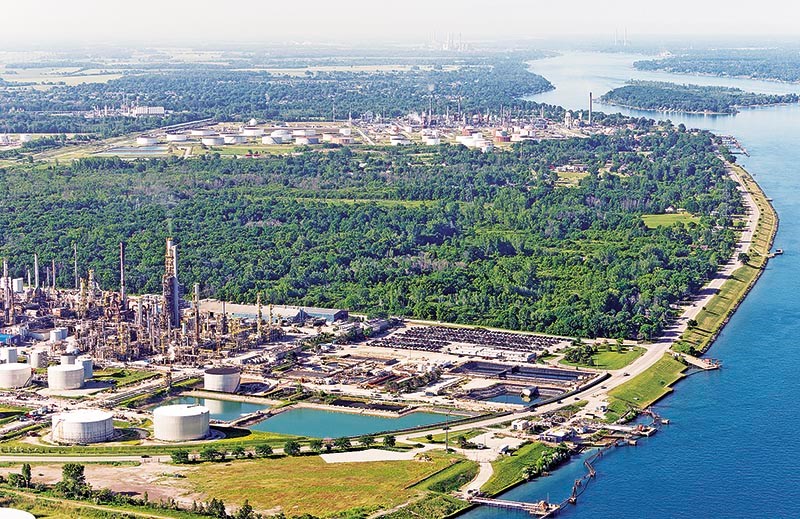Marco Vigliotti
Government inaction is jeopardizing the health and safety of residents of Sarnia’s First Nation reserve, Ontario’s environmental watchdog says.
Gord Miller scolds the Environment Ministry in his annual report for failing to respond properly to complaints from Aamjiwnaang First Nation residents about headaches, nausea, coughing and skin irritation following contaminant leaks in 2013.
The environmental commissioner called the government’s response to health and safety issues at Aamjiwnaang “truly shameful,” noting the reserve’s precarious proximity to the massive industrial facilities known as the Chemical Valley required the ministry to be “extra diligent” because of the cumulative effects from the numerous nearby plants.
“It’s a high-risk situation and the Ministry of Environment should be on top of this,” Miller told an Oct. 7 press conference at Queen’s Park following the report’s release.
Such a scenario would not be acceptable anywhere else in Ontario, he said.
More than 110 million kilograms of pollution was released to the local air in 2009, about 60% of it within five kilometres of Aamjiwnaang, the report notes.
While acknowledging more needs to be done to combat air pollution in the area, Kate Jordan, a spokeswoman with the Environment Ministry, stressed the province is “committed to continuing to work collaboratively with our First Nations partners to address environmental issues.”
She points to data from the Aamjiwnaang First Nation Air Monitoring Station, tasked with helping the ministry better understand what contaminants are present in the local air shed, as a valuable tool in the effort to improve “air quality and support ongoing health assessments in the community.”
Miller’s scathing report also raised concerns about the safety infrastructure at Aamjiwnaang.
As a result of bordering the Chemical Valley, residents of the reserve experience shelter-in-place orders that require residents to stay inside, seal air exchanges and await further instructions. These advisories are issued when air quality is particularly bad, often as a result of a spill or sudden chemical release.
Yet, residents can’t even be sure the community’s warning sirens “are reliable or that the government will communicate openly and promptly about its environmental findings,” the report states.
Elaine MacDonald, senior staff scientist with activist group Ecojustice, which provided legal assistance in two Environment Bill of Rights challenges by Aamjiwnaang residents, said she hopes the ministry responds to Miller’s report in part by improving enforcement efforts in the Sarnia area.
Miller’s comments, she added, were “quite powerful.”
